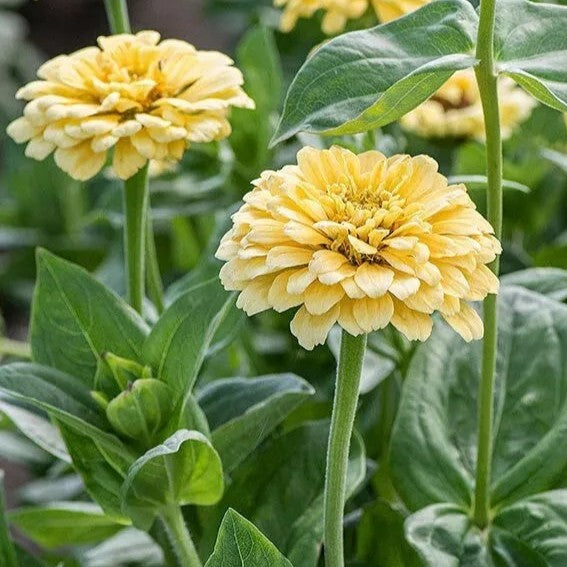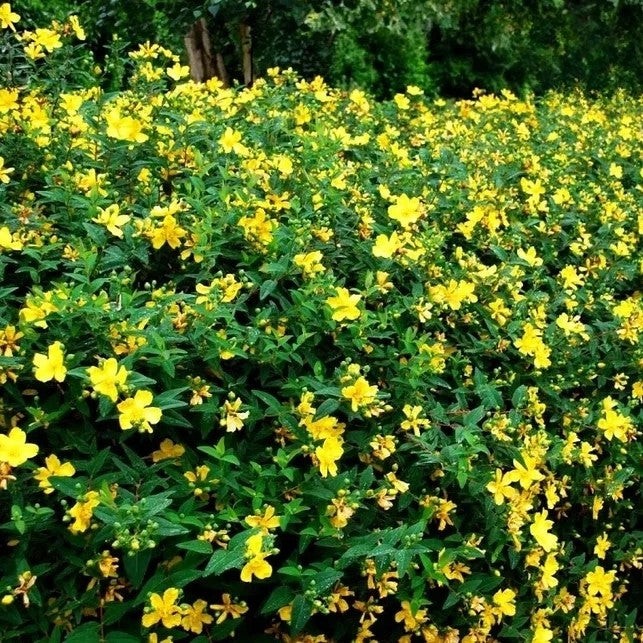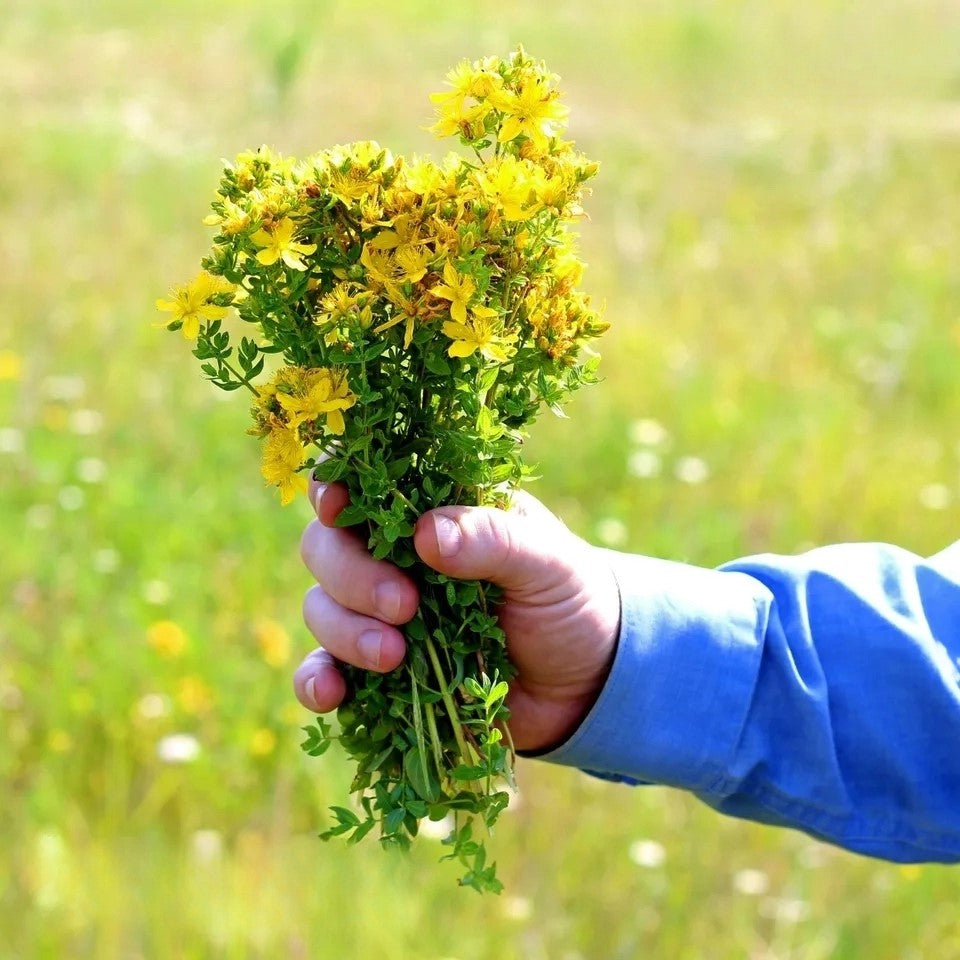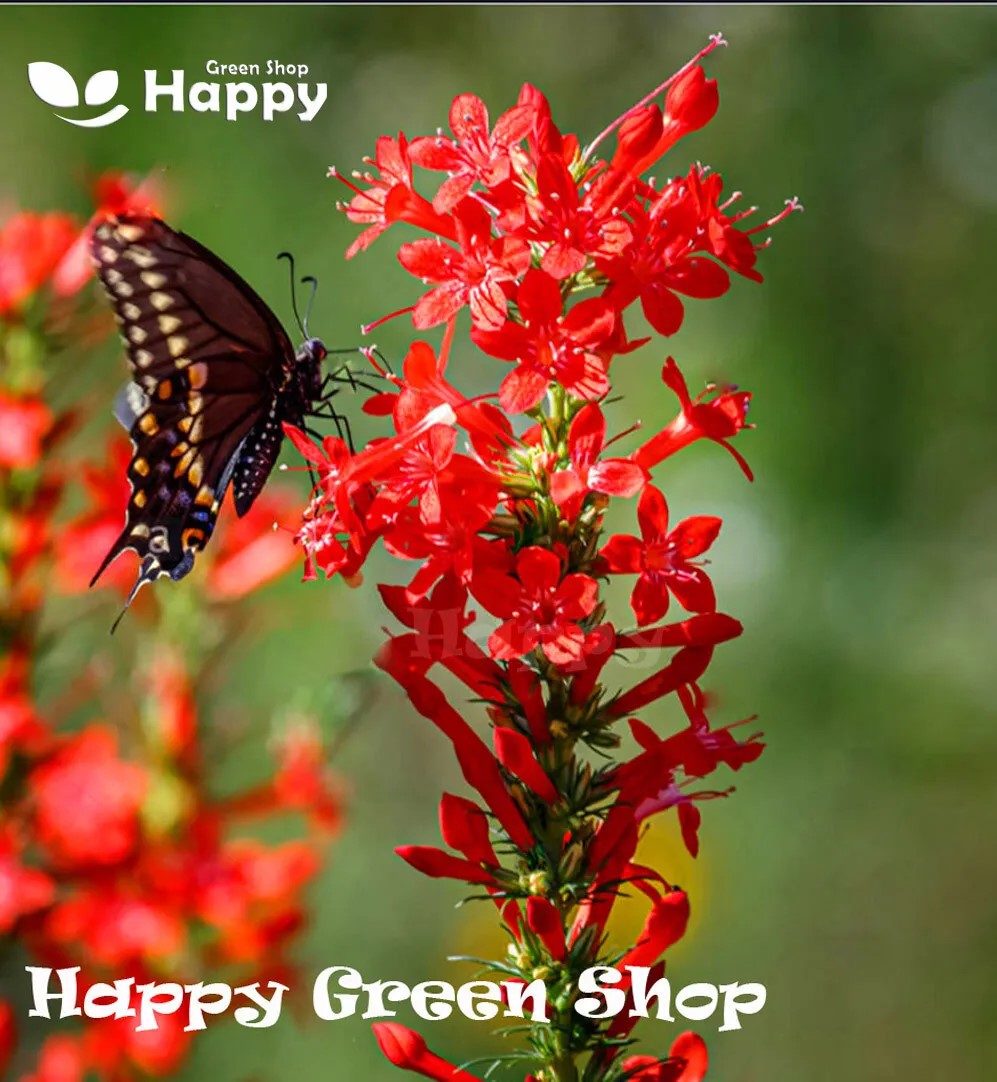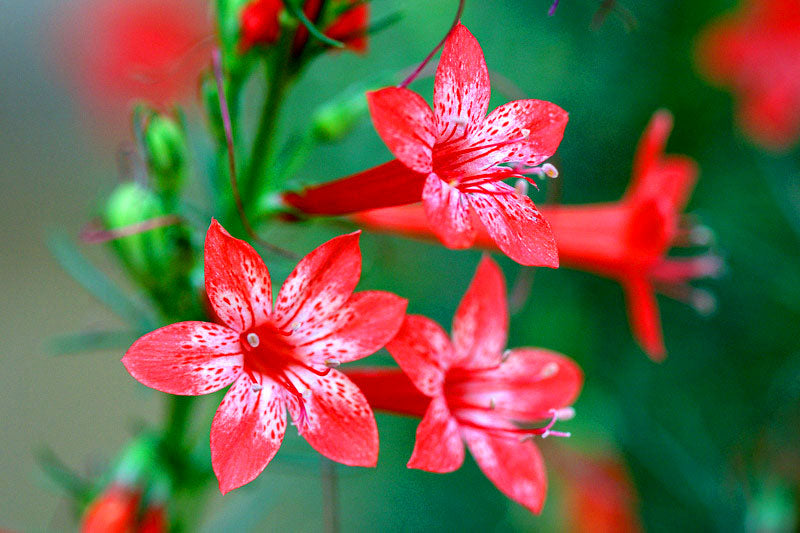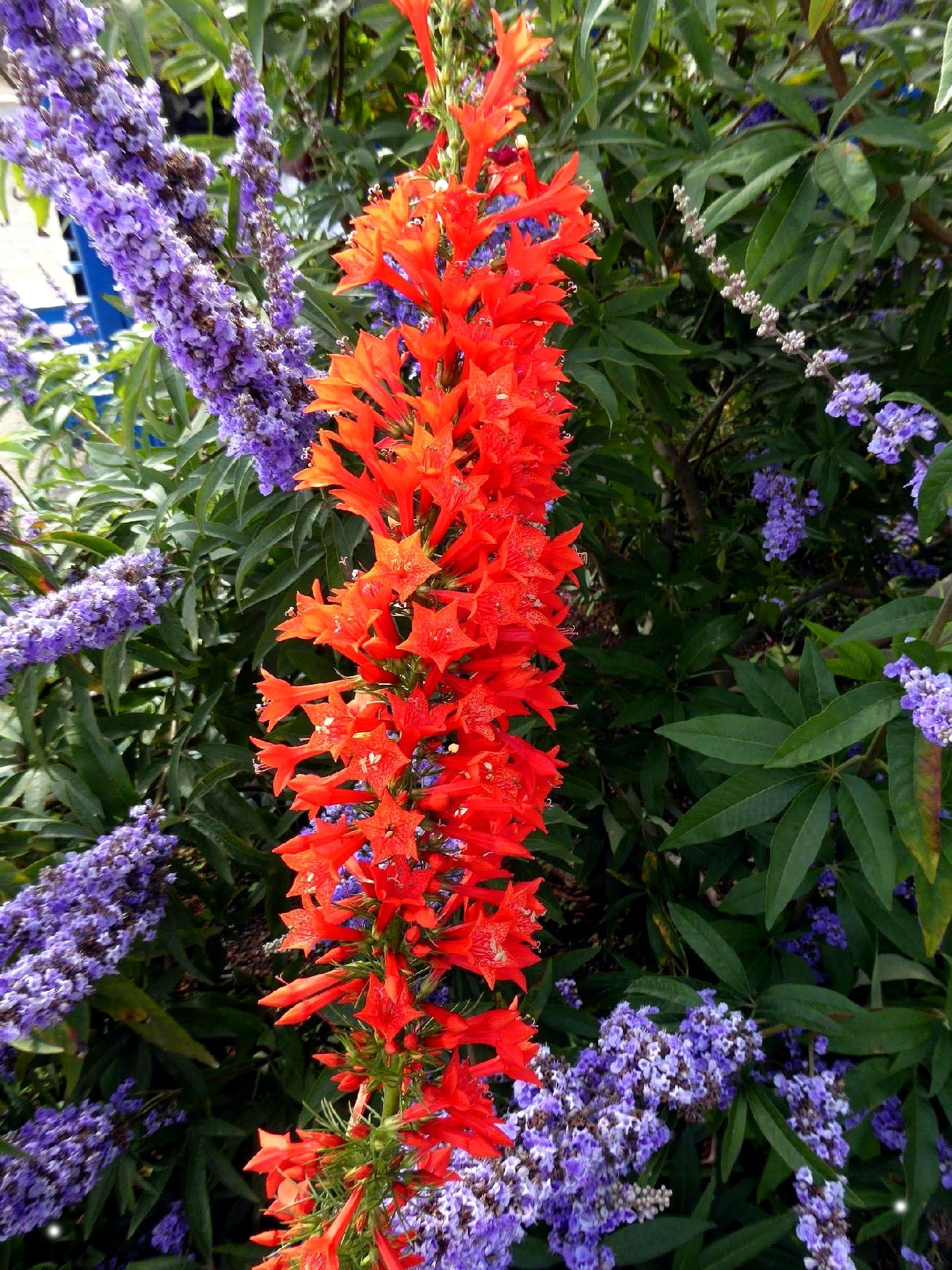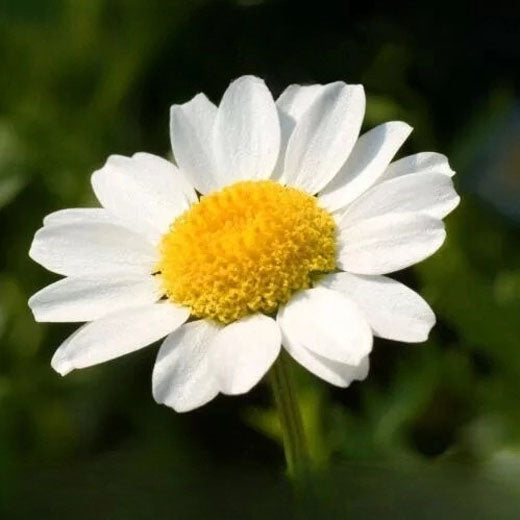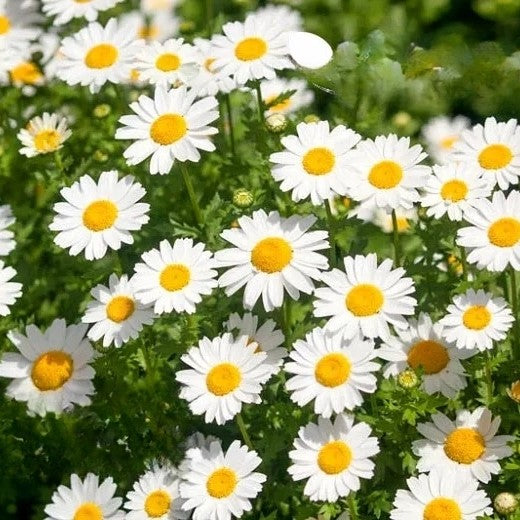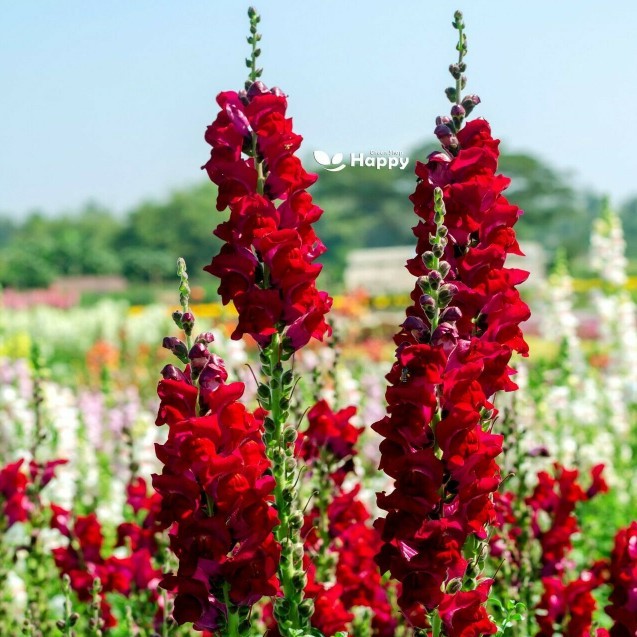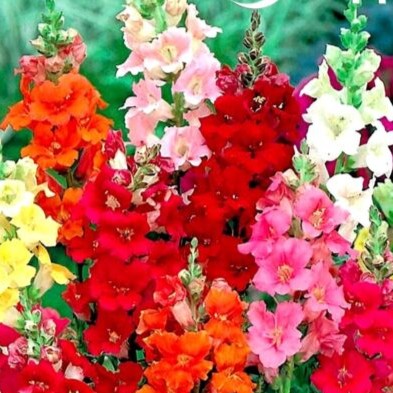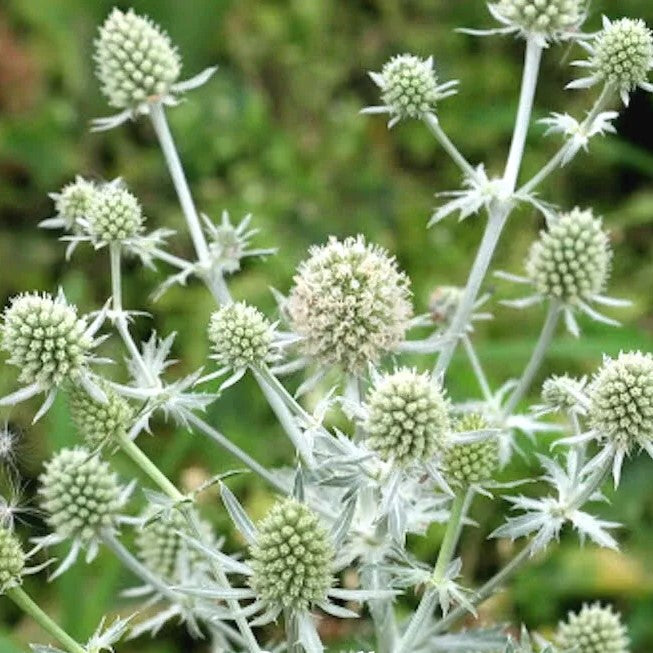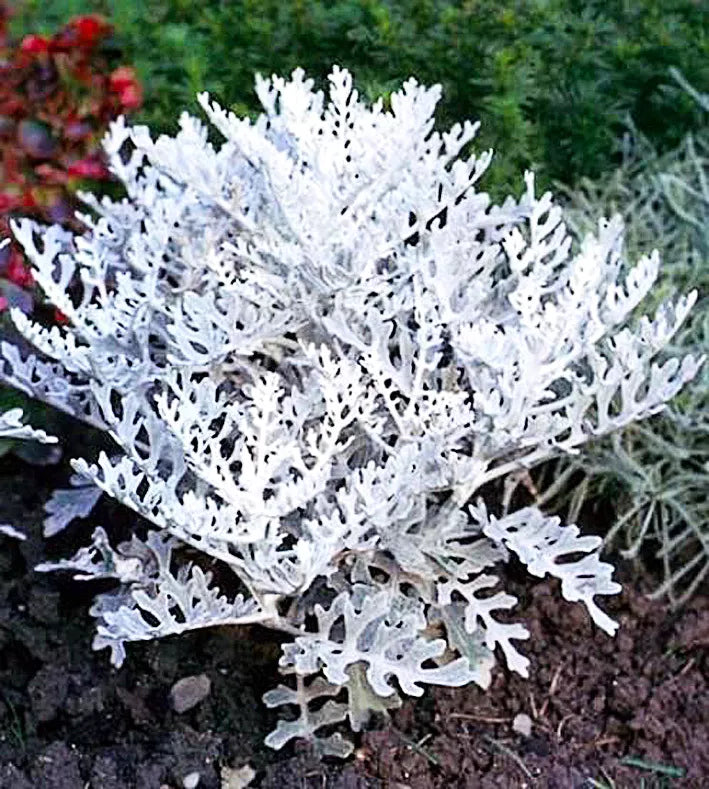Sort by:
287 products
287 products
St. John’s Wort – Seeds (Hypericum perforatum)
St. John’s Wort (Hypericum perforatum) is a hardy perennial herb known for its bright yellow star-shaped flowers and long history of use in traditional herbal medicine. It grows easily in gardens, meadows, or wildflower plantings, attracting pollinators while adding natural beauty.
Often valued for its ornamental and herbal qualities, St. John’s Wort thrives in poor soils and sunny locations, making it a low-maintenance addition to cottage gardens and naturalized landscapes.
How to Grow
-
Sow indoors: February – April
-
Sow outdoors: April – June, or autumn for natural stratification
-
Depth: Surface sow – seeds need light to germinate
-
Spacing: 30 cm between plants
-
Position: Full sun to partial shade
-
Soil: Well-drained, moderately fertile, sandy or rocky soils
Key Features
-
Perennial herb with golden yellow, star-shaped blooms
-
Attracts bees and pollinators
-
Grows well in poor, dry soils – low maintenance
-
Suitable for borders, meadows, and herb gardens
-
Traditional herb, long valued in folklore and medicine
Flowering & Harvest
-
Flowering time: June – September
-
Blooms can be collected at peak flowering if used for herbal purposes.
Standing Cypress – 150 Seeds (Ipomopsis rubra)
Add a dramatic vertical accent to your garden with Standing Cypress (Ipomopsis rubra). This hardy biennial or short-lived perennial produces tall, slender spikes covered with brilliant scarlet-red, trumpet-shaped flowers. Loved by hummingbirds, butterflies, and bees, it creates a striking display in wildflower meadows, cottage gardens, and naturalized plantings. Its fern-like foliage provides texture, while the flowers bloom in succession for weeks of color.
Why Grow Standing Cypress?
-
Vibrant scarlet-red tubular flowers
-
Attracts hummingbirds, butterflies, and pollinators
-
Tall, airy spires up to 90–150 cm
-
Perfect for naturalistic and meadow plantings
-
Heat and drought tolerant once established
Key Features
-
Type: Biennial or short-lived perennial wildflower
-
Height: 90–150 cm
-
Flowering: Summer (July–September)
-
Position: Full sun; well-drained soil
-
Uses: Pollinator gardens, borders, meadows, cut flowers
Ideal For
-
Wildflower meadows & prairie gardens
-
Pollinator-friendly planting
-
Adding height to borders and backdrops
-
Low-maintenance, drought-tolerant landscapes
Sowing & Growing
-
Sow indoors: March–April in trays or pots, cover lightly with soil
-
Sow outdoors: Directly in April–June where they are to grow
-
Germination: 14–21 days at 18–22°C
-
Thin/plant spacing: 25–30 cm apart
-
Flowers the second year, but may self-seed for naturalized displays
Spreading Petunia ‘Easy Wave’ F1 White – Seeds (Petunia x hybrida F1)
Description:
Create a dazzling sea of color with Spreading Petunia ‘Easy Wave’ F1 White, a vigorous and fast-spreading Petunia x hybrida variety. Known for its abundant, pure white blooms and trailing habit, this F1 hybrid provides exceptional ground coverage and continuous flowering all season long. Perfect for baskets, large containers, or as a radiant ground cover, it delivers brilliant, non-stop performance from spring through autumn.
Key Features
-
Profuse, pure white blooms with a trailing habit
-
Fast-growing and wide-spreading F1 hybrid
-
Long-lasting flowers from spring to autumn
-
Excellent weather tolerance and resilience
-
Easy to grow and maintain
Ideal For
-
Hanging baskets and window boxes
-
Large containers and patio planters
-
Garden borders and mass plantings
-
Ground cover and cascading displays
Sowing & Growing
-
Sow Indoors: February–April
-
Transplant Outdoors: May, after frost
-
Germination: 10–14 days at 20–24°C
-
Plant Spacing: 30 cm apart
-
Height: 15–25 cm
-
Spread: Up to 75 cm
-
Light: Full sun
-
Soil: Fertile, well-drained
Care Tips
-
Deadhead spent blooms for continuous flowering
-
Feed every 2–3 weeks with balanced liquid fertilizer
-
Keep soil moist but not soggy
-
Trim lightly if plants become leggy
Solar Fire Daisy Seeds (Ursinia anthemoides)
Solar Fire Daisy is a vibrant annual producing fiery orange and yellow daisy-like flowers all summer long. Its compact, bushy growth makes it perfect for borders, rock gardens, and containers. Loved for its bright, long-lasting blooms and easy care, it adds a cheerful splash of color to any garden.
What Makes It Special
-
Fiery orange and yellow daisy-like flowers that bloom all summer
-
Compact, bushy growth ideal for borders and containers
-
Long-flowering and low-maintenance
-
Attracts pollinators like bees and butterflies
Key Features
-
Botanical name: Ursinia anthemoides
-
Variety: Solar Fire
-
Seed count: Approx. seeds per pack
-
Height/Spread: 25–35 cm tall, 20–30 cm spread
-
Position: Full sun; well-drained soil
-
Flowering period: June–September
Ideal For
-
Borders, rock gardens, and bedding displays
-
Containers and patio pots
-
Pollinator-friendly gardens
-
Brightening summer garden beds
Sowing Instructions
-
When to sow: February–April indoors; March–May outdoors
-
How to sow:
-
Sow seeds thinly on the surface of moist seed compost and press lightly
-
Germination occurs in 10–14 days at 18–22°C
-
-
Transplanting: Plant seedlings 20–25 cm apart after frost
-
Care: Water moderately; deadhead faded flowers to encourage continuous blooming
Snowland Daisy 'Pure White' Seeds (Chrysanthemum paludosum)
Add a touch of brightness to your garden with the charming Snowland Daisy 'Pure White'. These compact, bushy plants are covered with masses of pure white blooms and sunny yellow centers, creating a cheerful carpet of flowers. Perfect for edging, containers, or rock gardens, they provide long-lasting color throughout the summer.
What Makes It Special
-
Masses of pure white blooms with golden centers
-
Compact, low-growing habit for neat displays
-
Excellent for borders, pots, and edging
Key Features
-
Botanical name: Chrysanthemum paludosum
-
Annual
-
Height: 20–25 cm
-
Blooming period: Summer to autumn
-
Sun-loving and easy to grow
Ideal For
-
Rock gardens and ground cover
-
Patio pots and containers
-
Flower bed edging and borders
Sowing
-
Sow indoors from March–April or directly outdoors from May
-
Cover lightly with soil, keep moist until germination (7–14 days at 18–20°C)
-
Thin and transplant seedlings once large enough to handle
-
Flowers from June onwards
Snapdragon Tall ‘Ruby Red’ Seeds (Antirrhinum majus maximum)
Snapdragons are a cottage garden favorite, and the Tall Ruby Red variety brings a bold splash of deep crimson to your beds and borders. These elegant spikes grow tall and upright, producing dense clusters of velvety, ruby-red flowers that bloom over a long season. Highly attractive to pollinators and easy to grow, they are perfect for creating vertical interest in flower beds, cutting gardens, and cottage-style displays.
What Makes It Special
-
Striking ruby-red blooms for dramatic color impact
-
Long flowering season, from summer to autumn
-
Excellent as a cut flower with a long vase life
-
Loved by bees and butterflies
Key Features
-
Botanical name: Antirrhinum majus maximum
-
Common name: Snapdragon Tall ‘Ruby Red’
-
Seed count: Approx. per pack (customizable)
-
Height/Spread: 60–80 cm tall, upright growth
-
Position: Full sun, fertile well-drained soil
-
Flowering period: June – October
-
Lifespan: Half-hardy annual
Ideal For
-
Cottage gardens and classic borders
-
Tall bedding displays for height and contrast
-
Pollinator-friendly gardens
-
Cut flower arrangements
Sowing Instructions
-
When to sow: Indoors from February–April; outdoors from May.
-
How to sow:
-
Sow thinly on the surface of moist seed compost (do not cover; needs light to germinate).
-
Keep at 18–20°C until germination (10–20 days).
-
Transplant seedlings when large enough, spacing 25–30 cm apart.
-
-
Care: Pinch out growing tips for bushier plants and deadhead regularly to extend flowering.
Snapdragon 'Trumpet Serenade' – Seeds (Antirrhinum majus)
A striking variety of snapdragon with tall, trumpet-shaped blooms in a rich mix of colors. Long-flowering and versatile, 'Trumpet Serenade' adds height, structure, and vibrant color to summer borders and cutting gardens. Beloved by pollinators, it brings life and charm to any display.
Why Grow Snapdragon 'Trumpet Serenade'?
-
Showy, trumpet-like blooms in mixed colors
-
Long flowering season
-
Excellent as a cut flower
-
Attracts bees, butterflies, and pollinators
Key Features
-
Type: Half-hardy annual
-
Height: 60–75 cm
-
Flowers: Summer into early autumn
-
Position: Full sun to partial shade
-
Use: Borders, cut flowers, cottage gardens, containers
Ideal For
-
Adding vertical color to mixed borders
-
Cutting for fresh bouquets
-
Pollinator-friendly plantings
-
Cottage-style and wildlife gardens
Sowing & Growing
-
Sow indoors: February–April, lightly pressing seeds into moist compost (do not cover, needs light to germinate)
-
Germination: 10–21 days at 18–21°C
-
Transplant outdoors after frost, spacing 25 cm apart
-
Flowers: June–October
Tip: Pinch out young plants to encourage bushier growth and more blooms.
Silver Sea Holly – Seeds
(Eryngium planum)
Silver Sea Holly is a striking perennial known for its spiky, steel-blue flowers and silvery foliage. Its architectural form adds texture and drama to borders, rockeries, and perennial beds. Long-lasting and drought-tolerant, it also attracts bees and butterflies, making it perfect for pollinator-friendly gardens.
Why Grow Silver Sea Holly?
-
Unique spiky, steel-blue flowers with silvery foliage
-
Hardy, drought-tolerant perennial
-
Long-lasting blooms ideal for cutting
-
Attracts bees and butterflies
Key Features
-
Type: Perennial
-
Height: 60–90 cm
-
Flowers: Summer
-
Position: Full sun
-
Soil: Well-drained, moderately fertile
Ideal For
-
Cottage and mixed borders
-
Rockeries and perennial beds
-
Pollinator-friendly gardens
-
Cutting for floral arrangements
Sowing & Growing
-
Sow indoors: February–April in seed trays
-
Sow outdoors: April–May directly in prepared soil
-
Germination: 14–28 days at 18–20°C
-
Spacing: 30–40 cm between plants
-
Care: Low maintenance; drought-tolerant once established
Silver Dust / Dusty Miller Seeds (Cineraria maritima candicans)
Silver Dust, also known as Dusty Miller, is a striking foliage plant prized for its silvery, velvety leaves and compact, mounding habit. It adds contrast and texture to borders, containers, and mixed plantings. Its soft silver foliage complements vibrant flowers beautifully and remains attractive throughout the growing season.
What Makes It Special
-
Elegant silvery foliage that brightens garden beds
-
Low-maintenance and drought-tolerant once established
-
Perfect for contrast planting in borders and containers
-
Compact, mounding growth habit
Key Features
-
Botanical name: Cineraria maritima candicans
-
Common name: Silver Dust / Dusty Miller
-
Seed count: Approx. seeds per pack
-
Height/Spread: 20–30 cm tall, 25–35 cm spread
-
Position: Full sun to partial shade; well-drained soil
-
Flowering period: Mainly foliage interest; flowers occasionally in summer (small yellow blooms)
Ideal For
-
Borders and edging for contrast with colorful flowers
-
Containers, window boxes, and mixed plantings
-
Rock gardens and patio displays
-
Low-maintenance decorative foliage
Sowing Instructions
-
When to sow: February–April indoors
-
How to sow:
-
Sow seeds thinly on the surface of moist seed compost and press gently (do not cover)
-
Keep at 18–20°C; germination takes 10–20 days
-
-
Transplanting: When seedlings have 2–3 true leaves, transplant into individual pots
-
Care: Plant out after frost; water moderately, avoid waterlogging
Showing 72/287




